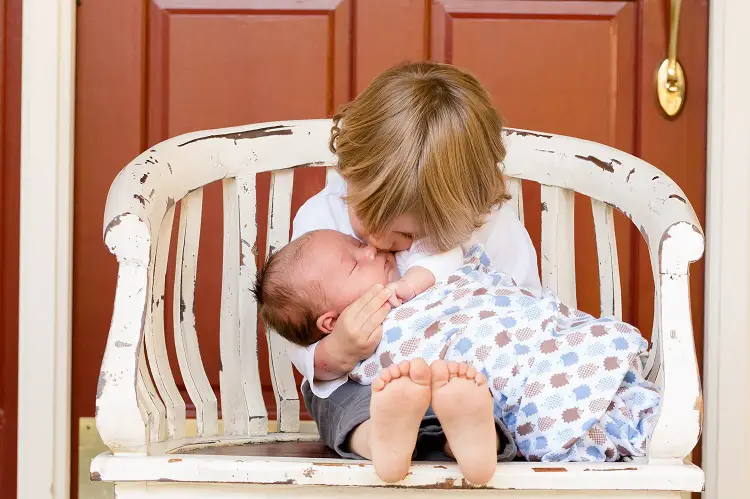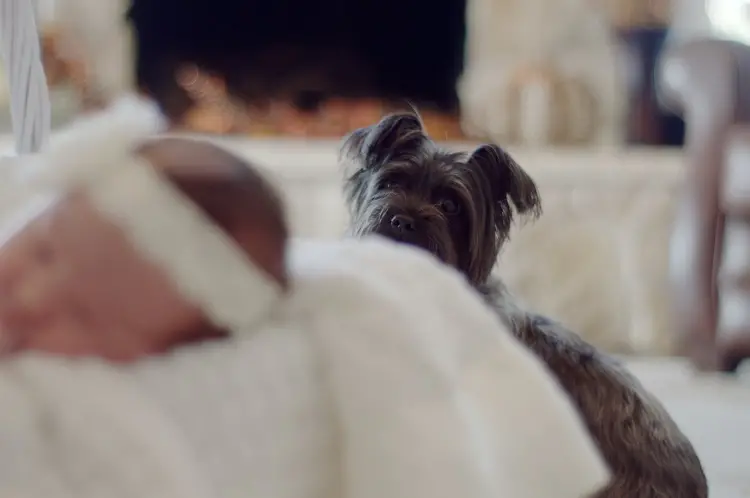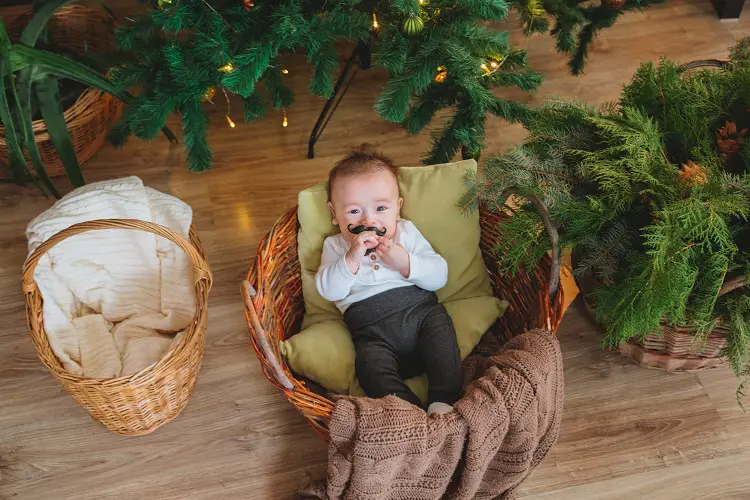The safety of a newborn in a family should be the paramount duty of every parent or caregiver.
We all know parenting isn’t an easy job; therefore, one must be prepared before embarking on such a journey.
A lot of question comes to mind when preparing for newborn arrival. New parents often worry about these things, especially what needs to be done to ensure their baby is kept safe and healthy.
In this article, we will share our newborn safety checklist and some healthy tips new parents should know to ensure their baby is safe, whether in the car, at home, during breastfeeding, or during bath time.
Newborn Safety Checklist – Sleeping Tips

- Don’t leave your baby unattended for any reason.
- Ensure the board of your baby’s crib is no more than 2 3/8 inches apart and that the crib mattress suits perfectly. Avoid using soft or woolly bedding or pillows.
- Make sure your baby sleeps on her back. Newborns who sleep on their backs are less prone to die of SIDS than newborns who sleep on their sides or stomachs.
- Ensure your baby sleeps on a firm mattress, and avoid putting stuffed animals or toys in your baby’s crib.
- Install a carbon monoxide detector near the furnace and another in your baby’s room or near where the baby sleeps.
- Do not leave your baby unattended near water or on any high surface like a changing table. Even if you think your baby can’t roll over, assume he/she can.
- Do not attach a string, necklace, or pacifier to a string or cord around your baby’s neck to prevent your baby from choking.
- Ensure your baby’s bassinet is in the same room you sleep. You should do this until your baby is at least 6 months old.
- Do not share your bed with the baby to prevent accidental suffocation or strangulation during nighttime.
- Do not allow your baby to get too hot or cover your baby’s head to prevent your baby from overheating.
- Always choose the best sleep sack instead of a blanket to keep the baby warm against cold weather.
- Do not leave your baby alone with a pet.
- Monitor your pet closely for any sign of jealousy or weird behaviors. Jealousy can cause a pet to exhibit strange behaviors, risking your baby’s life.
- Try and maintain the level of attention and affection you did before the baby was born.
- Trim your pet’s claws short to avoid scratching on your baby’s delicate skin.
Read Also: Safety Rules Every Child Should Know
Newborn Safety Checklist – Home Tips

- Do not keep your baby near the fire, hot water, stoves, or other hot objects.
- Never let anyone smoke in your house or car. You should smoke outside the house but have your baby monitor if you’re a smoker.
- When holding your baby, ensure you’re not carrying any hot item or drink.
- Ensure you have a temperature guard on your water heater at a maximum of 120 degrees Fahrenheit (48 degrees Celsius).
- Use effective working smoke detectors in your house. Test the smoke detectors before use and change the batteries when necessary.
- Ensure you keep soft bedding like blankets, pillows, bumper pads, and soft toys away from your baby’s bassinet or crib.
- Avoid hitting, shaking, or playing roughing with your baby.
- Ensure you choose a crib that is current and meets all safety standards.
- Make sure the mattress is low if the crib has a mobile.
- Ensure your baby’s environment is kept at 68 to 72 degrees Fahrenheit.
- Certain toys like mobile and hanging crib toys must be kept out of your baby’s reach.
- Your changing table should have straps. This is to prevent your baby from rolling off. Always use these straps to help restrain your baby during diaper-changing times.
- Ensure baby diapers, wipes, and other items are within reach. Buying a diaper caddy helps make all these easy for you.
- Don’t turn your back on your newborn when reaching for something. Always keep an eye on him/her.
- Get a fire extinguisher and read the manual guide on how to use it.
- Remove or seal any flaking or peeling paint in your home. You could remove this paint from your house, especially if your house was built before 1978, with the help of a professional.
- Put non-slip pads under all rugs in your house.
- Make sure you unplug and put away any electric appliances that you’re not using.
- You must finish all painting, artwork, and wallpapering at least eight weeks before the baby arrives to avoid exposing your baby to any potentially harmful smell or odor.
- Train your dog properly before the baby arrives. Alternatively, you can put your dog in obedience classes if needed.
- Always keep pet toys away from your baby to avoid suffocation.
- Make you add post-emergency numbers (pediatrician, local hospital, Poison Control Hotline—800-222-1222) to your home phone and cell phone contact list.
- Train your infant in CPR class.
- Get a first-aid kit that includes an infant thermometer, rubbing alcohol, mild detergent, baby fever reducer, baby’s electrolyte solution, oral syringe, tweezers, antibiotic ointments, Aloe Vera gel, etc.
Read Also: How to install safety 1st cabinet and drawer latches
Newborn Safety Checklist – Breastfeeding Tips
- Breast milk is the best baby food since it offers protection against SIDS.
- If you are breastfeeding your baby and feel that you may fall asleep, feeding your baby on your bed is best advised rather than on a couch or cushioned chair.
- When it’s time for transitioning, always choose formulas that taste closest to breast milk.
- Always burp your baby after feeding.
- Eat healthy because certain foods can affect your breast milk supply and taste.
- Always drink enough water.
Read Also: Newborn Night Feeding Tips For First-Time Moms
Newborn Safety Checklist – Car Tips
- First, your baby’s car seat should sit in the back seat, and make sure your baby is facing the rear window while traveling.
- Ensure no one smokes in your car while the baby is in the back seat.
- Never leave your baby unattended in a car or with dogs/cats.
- Since newborn neck muscles are weak, make sure to support their head at all times to avoid serious injury or possibly death.
- Always keep the baby safe and secured in a properly installed car seat when on the road trip.
- Do not use a car seat in the same location as an airbag.
- Make sure you follow your manufacturer’s car seat instructions on how to install and secure the seat and your child.
Read Also:
Newborn Safety Checklist – Bathing Tips
- Place a towel or receiving blanket on the bottom of your bathtub during bath time to help prevent the baby from slipping down.
- To prevent scalds, set your water heater down to 120°F (48.9°C) or lower.
- Do not leave your baby unattended in a bath.
- You should that even an inch of hot water can harm your newborn.
- If you must leave the room during bathing time, always take the baby with you.
- Using a small tub during bath time lets you control the temperature of the water.
- When setting up your baby’s bathwater, you should begin with cool water and then add hot water to it.
- Mix the baby’s bathwater until it feels warm but not hot.
- You should check the water temperature using either your elbow or drop water onto the inside part of your arm. Alternatively, get a thermometer made for testing bathwater.
- Ensure the room temperature where you’re bathing your baby is about 75°F.
- Keep drafts away from your baby, especially when your baby is wet.
- As soon as you’re done bathing your baby, pat your baby dry.
- Cover baby’s head with a hooded towel to keep him/her from getting a chill.
- Wash your baby’s body first, and then wrap him/her in a warm towel while washing her hair last.
- You should clean only the parts of your baby’s body that you can see.
- Avoid poking cotton swabs into your baby’s ears or nose.
- You should wait until the umbilical cord goes off before you bathe your baby in a tub. But you can still bath your baby using a soft sponge while the umbilical cord is still attached.
- Once your baby’s belly button is completely healed, you can get his/her entire stomach wet.
We hope that you found this newborn safety checklist helpful, it is now time to go to the drawing table and start applying all these safety rules to ensure proper care and safety for your little one. Still need to know more, learn how to wash newborn face.
